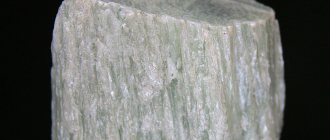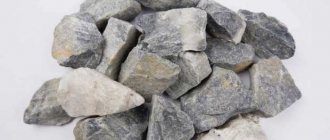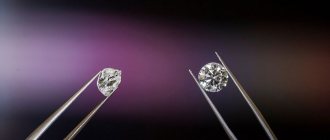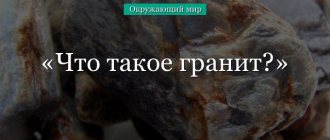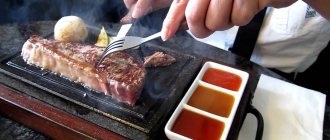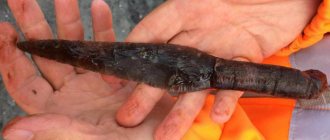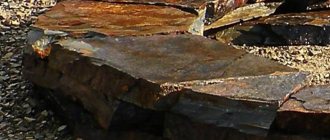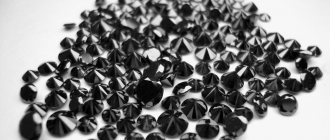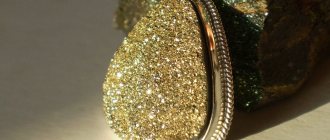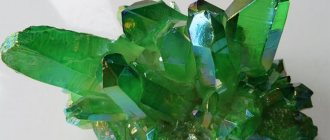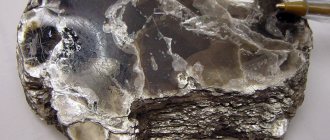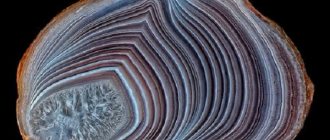Dolomite dishes: what is it, is it worth buying. Recently, you can often see offers for the sale of dolomite dishes that are truly beautiful to look at.
Dolomite is a natural material of a yellowish or cream color, which contains two main components - magnesium and calcium compounds. Dacha owners are well aware of the properties of dolomite flour, which is used to deoxidize the soil. Dolomite is very similar in structure to limestone. It is just as loose and porous. And it’s hard to imagine how a service could be made from such rock.
dolomite tableware
Chemical composition
Double salt CaC03-MgCO3. The contents of CaO and MgO often fluctuate within small limits. Isomorphic impurities in addition to Mg: Fe2+, when dominant, leads to another type of dolomite group - ankerite, sometimes Mn2+ (from several percent to dominance, in kutnogorite), occasionally Zn, Ni and Co (in red dolomite from Příbram in the Czech Republic the content is Co[CO3 ] reached 7.5%). There are known cases of inclusions of bitumen and other foreign substances in dolomite crystals.
Varieties
Ankerite was named in honor of M. Anker (1772-1843), a mineralogist from Styria. It is a transition member to pure CaFe(CO3)2 or "ferrodolomite".
Kutnagorite (named after the locality of Kutnagora in Czechoslovakia) is essentially “mangandolomite.”
Cobalt (with CoO about 5%) and lead dolomites are also known. Continuous isomorphic series apparently exist between CaMg(CO3)2 and CaFe(CO3)2, on the one hand, and CaFe(CO3)2 and CaMn(CO3)2, on the other.
Crystallographic characteristics
Syngony. Trigonal.
The symmetry class is rhombohedral. With. L36C. Etc. gr. R3– (C 23i). a0 = 4.822; с0 = 16.11 (at the ratio Ca : Mg = 1 : 1.1). a = 102°50′, Z = 2 for a cell of a cleavage rhombohedron; ag^=6.01 A, a = 47°30't Z = 1 for the simplest unit cell; a0 = 4.84 A, c0 = 15.95 A, Z = 3 for a hexagonal cell.
Crystal structure
Coarse-crystalline dolomite with talc and quartz.
Eastern Sayan Mountains. Its structure is homeotypical of calcite; Characterized by the fact that calcium (Ca) and magnesium (Mg) ions alternate along the triple axis. The replacement of large calcium atoms with smaller magnesium atoms leads to a decrease in the symmetry of the crystal structure and morphology of dolomite.
Crystal shape. Its crystals are usually rhombohedral {1011}, sometimes with a predominance of the {4041} form in combination with {1120}, {0001} or with rhombohedrons of the second and third order. (1011) D (TlOl) = 73°16′, (0001) D (4041) = 75°16′. The faces of the rhombohedron {1011} are often curved or composed of subparallel individuals and take on a saddle shape.
About the mineral
Dolomite is named after the French geologist Deod Grate de Dolomier, who discovered it in the 18th century in the Italian Alps. The mountains in which the mineral was found became known as the “Dolomites”. Dolomite has several alternative names: brown spar, rhombic spar, myemite, tarandite, codaciite, and ridolfite.
The most beautiful specimens of dolomite crystals and intergrowths are most valued by collectors. Such specimens are mainly used for collections. Stones with interesting and unusual designs are highly valued. Dolomite lends itself well to polishing. After which it acquires a pearlescent shine. Hence one of the names - mother-of-pearl spar.
Form of being in nature
The appearance of crystals. Frequently occurring crystals have a rhombohedral appearance. In contrast to calcite, rhombohedra {101–1} are widespread, and saddle-shaped curved faces and spherocrystals with curved cleavage surfaces are not uncommon.
Twins along {0001}, {1010}, {1120} and {0221} are common; the last type of twins is lamellar, found in mechanically deformed dolomite crystals. Typically, dolomite occurs in massive, granular, and dense aggregates as a rock-forming mineral.
The aggregates are usually crystalline granular, marble-like, often dense or porous, less often kidney-shaped, cellular, spherical, etc.
Areas of application
Dolomite urn
The areas of application of dolomite are varied, it:
- Is a source of magnesium.
- It acts as a raw material for the production of steel, flux and refractory products.
- It is one of the ingredients in the manufacture of glass, gypsum, rubber and cement.
- Serves as a fertilizer for the soil, reduces its acidity, and supplies calcium and magnesium (dolomite flour).
- Effective as a means of combating insects, harmless to humans (dolomite dust).
Dolomite is also in demand in construction - it is used as a main or finishing material, as a component of roofing and insulating materials. The mineral is resistant to temperature changes, frost-resistant, durable and environmentally friendly, has excellent filtration properties, thereby improving the indoor microclimate.
Physical properties
Optical
- Color. Colorless or white ( dolomite ), sometimes grayish-white with a yellowish, brownish, or less often greenish tint. Light to dark brown (ankerite) or pinkish (kutnahorite).
- Trait. White, light gray
- Shine. Glass.
- Transparency. Translucent, transparent.
Refractive indices
Nm = 1.681–1.695 and Nр = 1.500. . Nm = 1.681–1.695 and Nр = 1.500–1.513. In cathode rays it glows bright orange-red. no = 1.679, ne = 1.500 (Na-light) for pure dolomite; refractive indices increase with higher iron content.
Mechanical
- Hardness 3.5 - 4. Brittle.
- Density. 2.8–2.95 for pure dolomite, increases to 3.2 for ankerite and kutnahorite
- Cleavage perfect according to {1011}.
- The fracture is granular, conchoidal.
How to distinguish natural stone from fake
Due to the great demand for stone, there was a need to replenish the supply on the market. They quickly learned to fake Dolomite, imitating its structure and colors. This applies to the field of construction and jewelry.
Artificial dolomite for construction is produced by pouring concrete into molds. In this case, either paint is added to the total mass, or pigments are distributed on the outside of the product. The resulting stone is resistant to high temperatures, lighter and cheaper than natural stone.
If you scratch such a stone, you will find:
- a layer of paint;
- The characteristic appearance of concrete is a frozen powder with small inclusions.
Glass or plastic can be used in jewelry instead of dolomite.
To distinguish the original, you need:
- smell - natural stone has no odor;
- heat - the plastic will melt, the glass will turn black, the natural stone will crack;
- scratch - a thin strip will remain on the stone, the paint on fakes will be erased;
- You can remove small chips from the surface of the plastic with a sharp object.
In the video there is an artificial stone:
Chemical properties
Behavior in acids. Reacts with hydrochloric acid in powder. In a pile with cold HCl it dissolves slowly, and in a heated pile it dissolves faster (with strong boiling); Calcite boils strongly already in cold HCl.
Diagnostic signs
Similar minerals. Calcite (lime spar), magnesite, chabazite.
Like other carbonates of the calcite series, dolomite is characterized by rhombohedral cleavage. Dolomite crystals in most cases also have a rhombohedral appearance. In individual grains, without chemical analysis and measurement of optical constants, it is impossible to distinguish from ankerite, sometimes siderite. It is very characteristic that dolomite, unlike calcite, exhibits polysynthetic twinning not along (011–2), but along (022–1). In transparent bodices, this direction of twinning is established along the short diagonal of the rhombuses formed by the cleavage cracks.
Diagnostics. Difficult to recognize. It reacts with hydrochloric acid only in powder, which is why it differs from similar calcite, magnesite and siderite.
Related minerals . Pyrite, marcasite, hematite, realgar, tremolite, calcite, gypsum, anhydrite, halite, serpentine, talc.
Jewelry with mineral
As a rule, dolomite jewelry is original work, since there is no mass production of jewelry with this stone. But it is not used in jewelry because of its fragility and softness.
However, dolomite is actively and successfully used in the works of private craftsmen. Mostly dolomite jewelry is made in ethnic style. This means that they are not suitable for everyone. Such jewelry is preferred by people who love a similar style of clothing and lead a certain lifestyle. These are people of creative or free professions.
Necklace
Such necklaces are often made of leather, suede, and beads. But its main decoration is processed dolomite. Such things are exclusive (made in a single copy). That's why they are not cheap. For example, a designer necklace with dolomite costs from 1,500 to 5,000 rubles. And sometimes the price reaches up to 15,000. It all depends on the materials used.
Beads
This is a beautiful and unique decoration. In most cases, landscape dolomite is used to make beads; it has a color and pattern. Sometimes the patterns are so bizarre that they resemble landscapes or oriental paintings. No bead is alike.
And at the same time, they may have geometry flaws, natural roughness, chips and chips. Such flaws are not a disadvantage, but a highlight of natural stone.
A very popular color when making beads is called “Golden Autumn”, where yellow spots are scattered on a light gray background. Sometimes beads are sent with silver, copper or white gold. Such jewelry can cost from 3,000 to 20,000 rubles. The frame is of great importance here.
Also read: Cubic zirconia - a deceptive luxury created by man and science
Earrings
For example, earrings with dolomite in a copper frame cost 1,000 rubles. The same earrings in a silver frame cost 6,000 rubles. And gold earrings with polished landscape dolomite cost from 10,000 rubles, depending on the amount of gold used and the size and number of stones. Unusual specimens of dolomite are also used in the manufacture of earrings.
Reference. Particularly popular is the stone with a “realistic depiction of the landscape.” Such a landscape on stone was painted by nature itself without human hands. It is difficult to obtain such specimens, since they are mainly found in private collections.
You can purchase or order such jewelry only from private craftsmen (authors) who work specifically with this natural material. By agreement, we can discuss the design, cost, and materials from which the product will be made.
Dolomite dishes
Dolomite dishes have several features that distinguish them from porcelain or earthenware:
- brighter;
- cheaper;
- more fragile;
- less heat resistant;
- lighter.
How to navigate when buying dolomite cookware:
- Dolomite dishes are lighter than porcelain or earthenware dishes. But at the same time it is also more fragile. Therefore, when purchasing, you should choose heavier products. They are stronger and will last longer. As a rule, the price of such products is slightly higher.
- When purchasing, you can lightly tap the product. If the sound is clear and booming, then the clay is fired evenly and such a product can be purchased. A dull sound indicates that the product is of poor quality or the manufacturing technology is broken.
- Suspiciously cheap. Products that are too cheap should raise red flags. Sometimes, instead of natural dolomite tableware, you can purchase a synthetic fake. In order to further reduce the price, natural material is replaced with synthetics. This product can be identified by its characteristic chemical smell. If such a smell is present, then this is a fake and you should not buy it.
Attention! Dolomite cookware does not tolerate high temperatures; you cannot pour boiling water into it, as this will lead to the formation of microcracks. Such products are only suitable for cold foods or for interior decoration.
The properties of dolomite, its price, and various colors make this stone a universal material. If previously dolomite was used exclusively in construction, now it is used in architecture, the chemical industry, medicine, and metallurgy.
Dolomite is perfect for making decorative items and jewelry. The stone has positive energy and has a beneficial effect on humans. Caring for it is easy, and the product looks original.
Also read: Melanite - a type of garnet
Origin and location
Dolomite Khabarovsk Territory
Along with calcite, it is a widespread rock-forming mineral.
In typical vein hydrothermal deposits, it is much less common than calcite. When processing dolomitized limestones with hydrothermal solutions, coarse-crystalline masses of dolomite are often formed in association with magnesite, calcite, sulfides, quartz and other minerals (Tilkerode, Harz).
The main masses of dolomite are associated with sedimentary carbonate strata of all geological periods, but most of all Precambrian and Paleozoic age. Dolomites in these strata often form entire massifs or interlayer with limestones, and are sometimes observed in the form of not quite regular deposits, nests, etc.
The question of the details of their origin causes great debate. At present, dolomite is not deposited in marine basin environments, but in the geological past, in a number of cases, dolomites formed as primary sediments in aqueous salt-bearing basins, as indicated by their association with sediments of gypsum, anhydrite, and more soluble alkali salts.
In other cases, dolomitization of previously deposited sediments of calcium carbonate undoubtedly took place: facts of replacement of shells, corals and other calcareous organic remains with dolomite are observed.
In the weathering zone, dolomites slowly dissolve, collapse and turn into a loose fine-grained mass.
Product care
In order for the products to serve for a long time and look good, several conditions must be met:
- proper storage;
- regular care;
- appropriate treatment.
Regular care (weekly) involves wiping the surface with a damp natural fiber cloth. As a detergent, you can use special polymer liquids with wax elements. They will provide protection, polish and will not affect the color or appearance of the stone. Such products do not leave any traces after treatment.
Once a month, it is advisable to use mastics for natural stones, which will ensure the closure of microcracks and will help strengthen the mineral (it will last longer).
After treatment, it is recommended to cover the surface with a wax composition, which will prevent moisture from entering the middle of the wall product, fill microcracks, and help maintain aesthetics for a long time.
Dolomite deposits
Dolomite deposits are widespread along the western and eastern slopes of the Urals, in the Donbass, on the banks of the Volga and in other places. The main mass of dolomites is confined to carbonate strata of Precambrian and Permian age. Of great interest are the modern processes of dolomite formation in the lake. Balkhash (Kazakhstan), recently studied in detail by N. M. Strakhov.
In Central Europe, dolomites are known in Zechstein. Dolomite quarries are found, for example, in Wünschendorf, in Kaschwitz near Gera, dolomite marbles are known in Krotendorf, Hammer-Unterwiesenthal, Oberscheib, Raschau, Hermsdorf and in other areas of the Ore Mountains.
Production
Dolomite is often found in hydrothermal deposits. It can also form when calcite is replaced under the influence of sea or groundwater.
Since dolomite is a sedimentary rock, its strength is determined by its depth. The deeper the mineral layer is, the stronger it is.
There are dolomite deposits in Switzerland, Spain, and the North American continent. The largest of them are in Mexico and the Lake Ontario area. It is also found in the Caucasus, in the Moscow region, in the Ural Mountains, and Central Asia.
Dolomite is extracted in quarries using the drilling and blasting method or using borehole charges. Its processing includes crushing, roasting and in some cases grinding. The material is crushed into pieces using hammer or jaw crushers. Dolomite is usually fired in shaft-type kilns with remote fireboxes. Ball or other mills are used for grinding.
This is how an explosion occurs in a dolomite quarry:
By firing at different temperatures, different materials are obtained. Caustic dolomite is fired at temperatures up to 750 degrees. At higher temperatures (up to 850 degrees), dolomite cement is formed. Dolomitic lime, capable of slaking, is produced at a temperature of about 950 degrees.
If the temperature rises to 1500 degrees, metallurgical dolomite is obtained, which is used to produce refractory materials. This material does not react with water and has no astringent properties.
Dolomite flour is made by crushing and finely grinding raw materials; it contains ordinary dolomite.
For its production the following equipment is required:
- crushing plant;
- mill or crusher for crushing rock;
- feeding vibration mechanism;
- vibrating sieve.
The technological process for producing dolomite flour includes primary and secondary crushing, grinding into small fractions, thorough drying and heat treatment. It is then packed into containers or bulk bags. Dolomite flour is stored in closed dry warehouses.
Grinding the material to flour:
Therapeutic effect
The medicinal properties of the breed are recognized by official medicine.
Scientists have found that the mineral dolomite is saturated with calcium, a “building” component of body tissue.
The impact of the mineral solves many problems:
- normalizes blood pressure;
- stabilizes the pH balance of the stomach;
- heals blood vessels, heart;
- lowers blood sugar levels;
- inhibits the occurrence of osteoprosis, kidney stones, colds, and diseases of the genitourinary system.
Dolomite is present in pharmaceutical preparations that saturate the body with calcium.
Classification
Depending on the main impurity and other characteristics, the following varieties of dolomite are distinguished:
- brossite – ferrous raw material (up to 10%);
- ferrodolomite - a stone with divalent iron in its composition;
- mangandolomite – manganese content exceeds 20%;
- gurkhofian is a mineral with a microcrystalline structure;
- cobalt dolomite – contains more than 5% cobalt compounds, discovered in the Czech Republic;
- plumbodolomite is a lead-rich raw material;
- taraspite - a beautiful green-striped variety with nickel and iron in its composition;
- grainerite is a pink mineral saturated with manganese; named after its discovery site in Italy;
- teruelite is a black mineral, named after the place of discovery (Spain, province of Teruel);
Admixtures and local features create rocks with different characteristics.
Types and colors of stone
Dolomite can have different shades depending on the inclusions of various components:
- Pink. This color is acquired due to manganese impurities. The name of this variety is grainerite;
- Lilac. Dolomite containing an admixture of cobalt will have this color. Its name is cobalt dolomite;
- Black color. A rather rare variety of dolomite is black in color and is called teruelite;
- Dolomite acquires its green color due to the admixture of iron and nickel. The name of such a stone is taraslit;
- Dolomite acquires a reddish tint due to the admixture of iron. The variety is called ferrodolomite.
